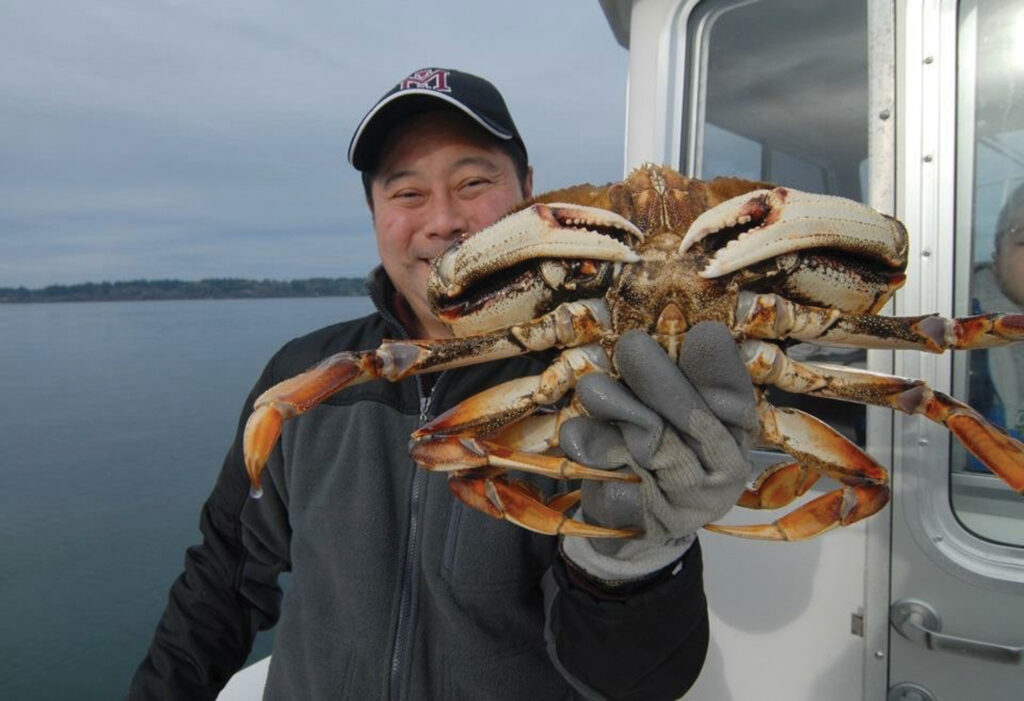
Autumn has arrived and with it comes the possibility of gathering razor clams off coastal beaches or trying your luck at catching Dungeness crab in some areas of Puget Sound.
Clamming Up
The Washington Department of Fish and Wildlife (WDFW) shellfish managers announced tentative coastal razor clam digging opportunities through December 29, with more dates forthcoming in 2024. The outlook for the 2023-2024 razor clam season is based on summer population assessments and showed a decrease compared to the past few years, but overall the razor clam populations remain robust and healthy on Long Beach, Twin Harbors, Copalis and Mocrocks.
Other key takeaways, according to WDFW, are a digging schedule with less digging days per low tide series, only some beaches per day, and less digging days overall. There is potential for some beaches to reach their total allowable catch of razor clams early and thus be unable to stay open through the end of the spring season, which usually occurs in late April or May. There is also a strong likelihood that diggers will find fewer big clams and more small clams, resulting in a lower average size on all beaches.
Another important factor that always plays into each season—and led to postponement of digs at Mocrocks for the opener that was to begin on September 29—are increased domoic acid levels, a natural toxin produced by certain types of marine algae that can be harmful or fatal if consumed in sufficient quantities. Domoic acid toxicity levels remained elevated on beaches through early October, so diggers should continually check the WDFW website before digging to confirm that beaches remain open. (Final approval of marine toxin testing by the Washington Department of Health usually occurs about a week or less— sometimes two to three days—prior to the start of each digging series.)
Upcoming tentative dates include: November 12-18; November 24-29; December 13-17; and, December 26-29. The most successful digging occurs between one and two hours before the listed time of low tide. On all open beaches, the daily limit is 15 clams per person. Each digger’s clams must be kept in a separate container, and all diggers must keep the first 15 clams they dig, regardless of size or condition. All diggers age 15 or older must have an applicable fishing license to harvest razor clams on any beach; WDFW recommends buying your license before visiting coastal beach communities. Not all beaches are open on each day of a series, so diggers should check the WDFW website at: wdfw.wa.gov/.
Nab that Crab
No need to feel crabby about this uplifting news: many Puget Sound marine areas have reopened daily for recreational crab fishing through December 31. Waters that reopened to sport crabbing beginning October 1 included: Marine Area 4 (Neah Bay, east of the Bonilla-Tatoosh line); Marine Area 5 (Sekiu and Pillar Point); Marine Area 6 (East Strait of Juan de Fuca); Marine Area 7 (San Juan Islands); Marine Area 8-1 (Deception Pass, Hope Island, and Skagit Bay); Marine Area 8-2 (Port Susan and Port Gardner); Marine Area 9 (Admiralty Inlet); and Marine Area 12 (Hood Canal), but a section north of Ayock Point only.
Of note: Crabbing will not immediately reopen for a winter season in Marine Area 10 (Seattle/Bremerton Area) or Marine Area 11 (Tacoma-Vashon Island) unless managers can confirm, based on estimates from catch card reports for the summer period, that enough quota remains to allow a winter fishery. The portion of Marine Area 12 (Hood Canal) south of Ayock Point and Marine Area 13 (South Puget Sound) will remain closed for the winter season due to ongoing conservation closures of all crab harvest in these areas.
Crabbers are reminded that setting or pulling traps from a vessel is only allowed from one hour before official sunrise through one hour after official sunset. The daily limit in Puget Sound is five Dungeness crabs, males only, in hard-shell condition with a minimum carapace width of 6¼ inches. Crabbers may also keep six red rock crabs of either sex per day with a minimum carapace width of five inches, and six Tanner crabs of either sex with a minimum carapace of 4½ inches. Crabbers must have a Puget Sound Dungeness crab endorsement to harvest Dungeness crab from Puget Sound. All Dungeness crab caught in the late-season recreational fishery must be recorded immediately on winter catch record cards, which are valid through December 31. Winter catch reports are due to WDFW by February 1, 2024 so that the next year’s planning can begin.